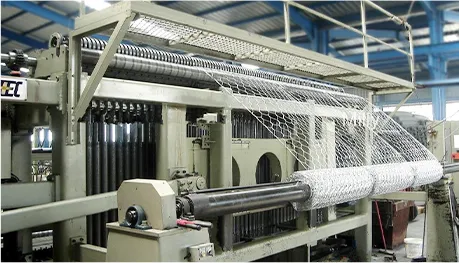-
 Phone:
Phone: -
 Email:
Email:

Installation of Rockfall Netting for Effective Slope Stabilization and Safety Enhancement
Rockfall Netting Installation A Comprehensive Overview
Rockfall netting is an essential engineering solution designed to prevent loose rocks and debris from falling onto roads, trails, and other populated areas. The installation of rockfall netting has become increasingly important in various terrains, particularly in mountainous regions where geological activity can pose significant risks. This article delves into the importance of rockfall netting, the installation process, the materials used, and the benefits it provides.
Importance of Rockfall Netting
Rockfalls are a common natural hazard that can lead to severe accidents, property damage, and disruptions in transportation. The installation of rockfall netting provides a proactive approach to managing these risks. The primary function of the netting is to catch falling rocks and stabilize slopes, thereby protecting infrastructure and ensuring the safety of individuals. Additionally, the implementation of rockfall netting can help conserve natural landscapes by minimizing the need for disruptive and expensive rock removal operations.
Installation Process
The installation of rockfall netting involves several steps, each of which is crucial to ensure the effectiveness and durability of the system.
1. Site Assessment Before any installation can begin, a thorough site assessment is conducted. This includes evaluating the geological conditions, identifying potential rockfall sources, and analyzing the areas at risk. Experts often use geotechnical surveys to gather data and determine the best approach for installing the netting.
2. Design Planning Following the assessment, engineers will develop a detailed design plan tailored to the specific conditions of the site. This plan considers factors such as the dimensions of the area to be protected, the expected size and frequency of rockfalls, and environmental considerations.
3. Preparing the Site The next phase involves clearing the installation area of vegetation and loose debris. Proper preparation ensures that the netting can be securely anchored and provides an adequate line of sight for installation crews.
4. Anchoring the Netting The rockfall netting is typically composed of high-tensile steel wire, which is both durable and flexible. The netting is anchored to the slope using various methods, including digging anchor pits, bolting, or using expanding resin. The strength of the anchoring system is critical, as it must bear the weight of fallen rocks while preventing the netting from giving way.
5. Mounting the Netting Once the anchoring system is in place, the netting itself is mounted. Special care is taken to ensure that the netting is taut and secured at multiple points. This configuration allows it to effectively catch falling debris without tearing or collapsing.
rockfall netting installation

6. Final Inspection and Maintenance Planning After installation, a thorough inspection is conducted to confirm that the system is secure and functioning as intended. Maintenance plans are typically put in place to ensure that the netting remains effective over time, which may include regular inspections and repairs.
Materials Used
The choice of materials for rockfall netting is critical to its performance and lifespan. Generally, high-tensile steel wire is favored due to its strength and flexibility. The netting itself comes in various mesh sizes, which can be selected based on the expected rock size and type of debris. Additionally, protective coatings, such as galvanization, are often applied to prevent corrosion and extend the life of the installation.
Benefits of Rockfall Netting
1. Safety The primary benefit of rockfall netting is enhanced safety for individuals and infrastructure. By preventing falling debris, the risk of accidents is significantly reduced, ensuring pedestrian and vehicular safety.
2. Cost-Effectiveness Compared to extensive rock removal operations, rockfall netting serves as a cost-effective solution. It requires less frequent interventions and can significantly lower maintenance costs over its lifespan.
3. Environmental Preservation By stabilizing slopes and preventing erosion, rockfall netting contributes to the preservation of the surrounding environment. This approach mitigates the risk of landslides and promotes sustainable land use practices.
4. Aesthetic Integration Modern rockfall netting systems are designed to be less visually obtrusive. With careful planning and installation, they can blend into the landscape, minimizing their visual impact.
Conclusion
The installation of rockfall netting is a crucial measure in mitigating the risks associated with rockfalls. Through careful planning, quality materials, and strategic installation techniques, this engineering solution provides enhanced safety, cost savings, and environmental benefits. As we continue to recognize the importance of managing natural hazards, rockfall netting installations will undoubtedly play a vital role in preserving both human life and the natural landscape.
-
Wire Mesh for Every Need: A Practical SolutionNewsJul.25,2025
-
Steel Fences: Durable, Secure, and Stylish OptionsNewsJul.25,2025
-
Roll Top Fencing: A Smart Solution for Safety and SecurityNewsJul.25,2025
-
Cattle Farm Fencing Solutions for Maximum SecurityNewsJul.25,2025
-
Affordable Iron Binding Wire SolutionsNewsJul.25,2025
-
Affordable Galvanized Wire SolutionsNewsJul.25,2025
-
Wire Hanger Recycling IdeasNewsJul.25,2025








